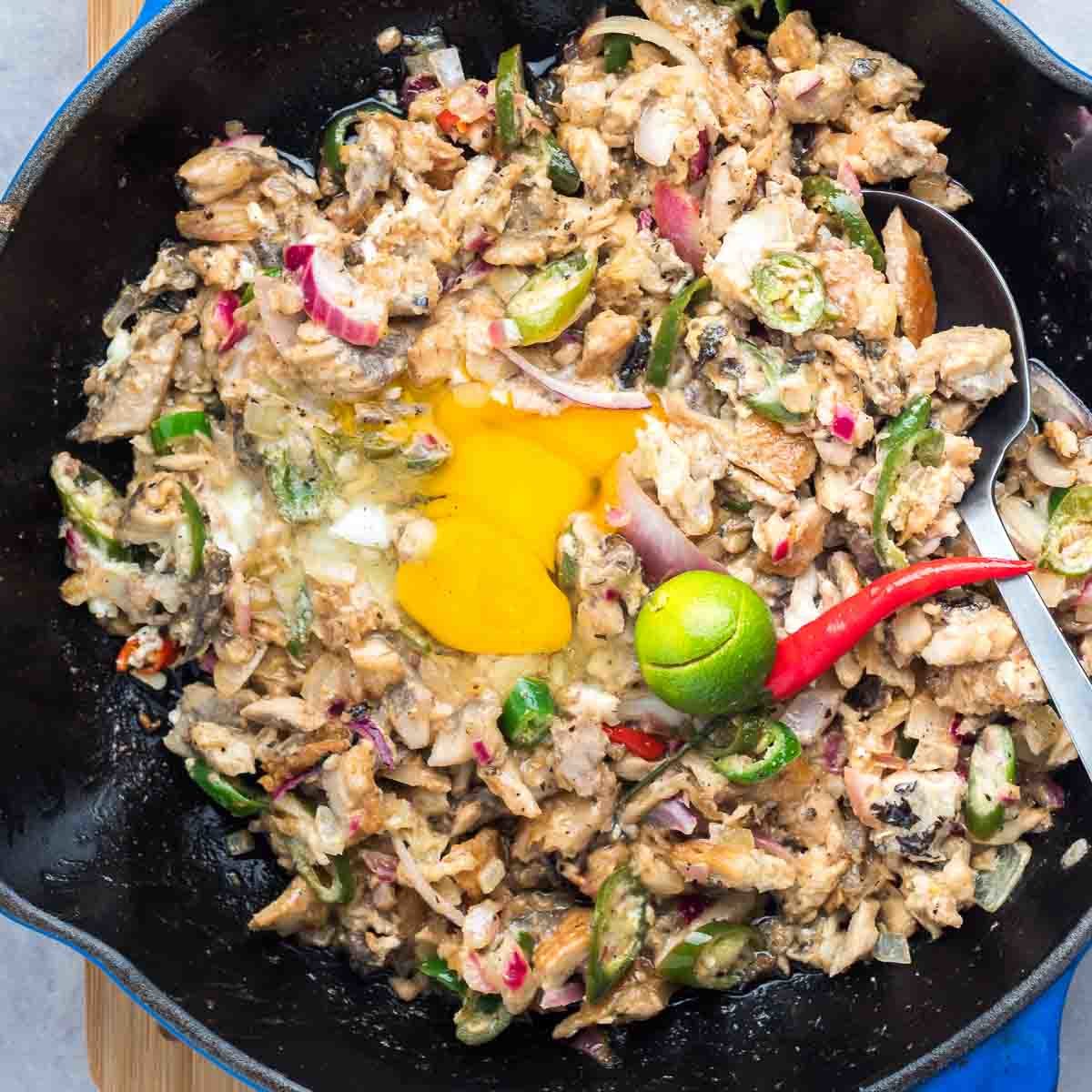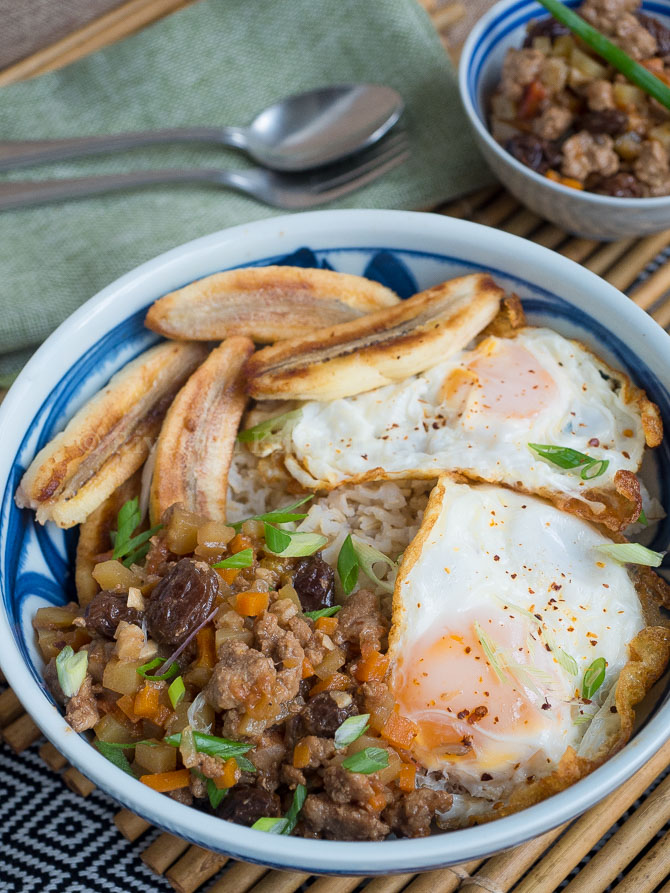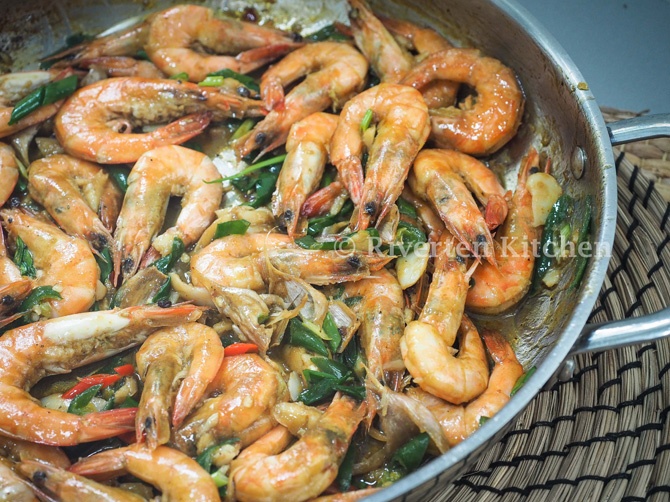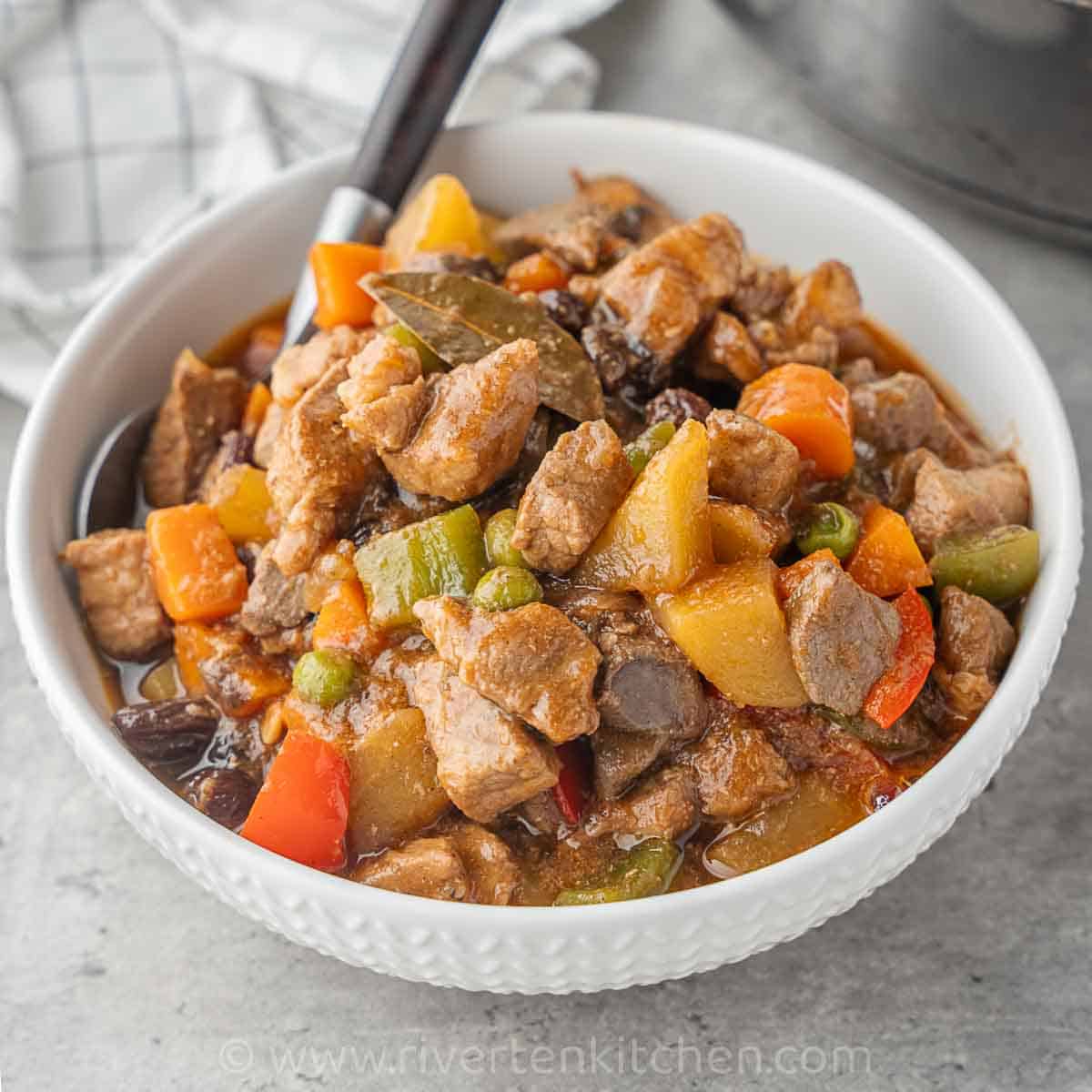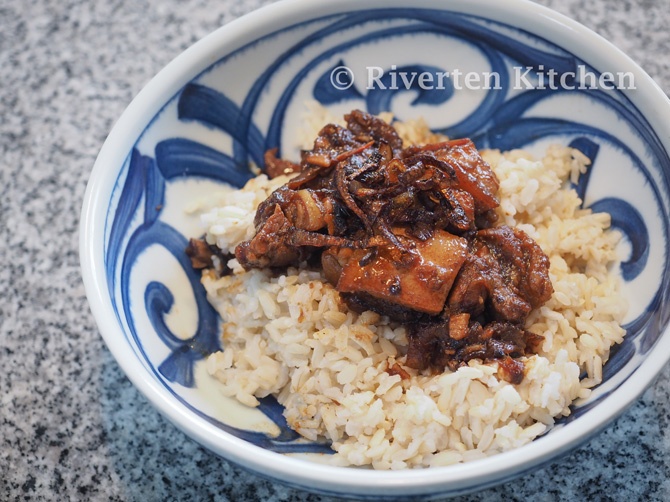This is an easy-to-follow laing recipe made of dried taro leaves, coconut milk, chilies, pork, and dried shrimp. Make it thick and rich or make it creamy with plenty of coconut gravy. So good with steaming rice!
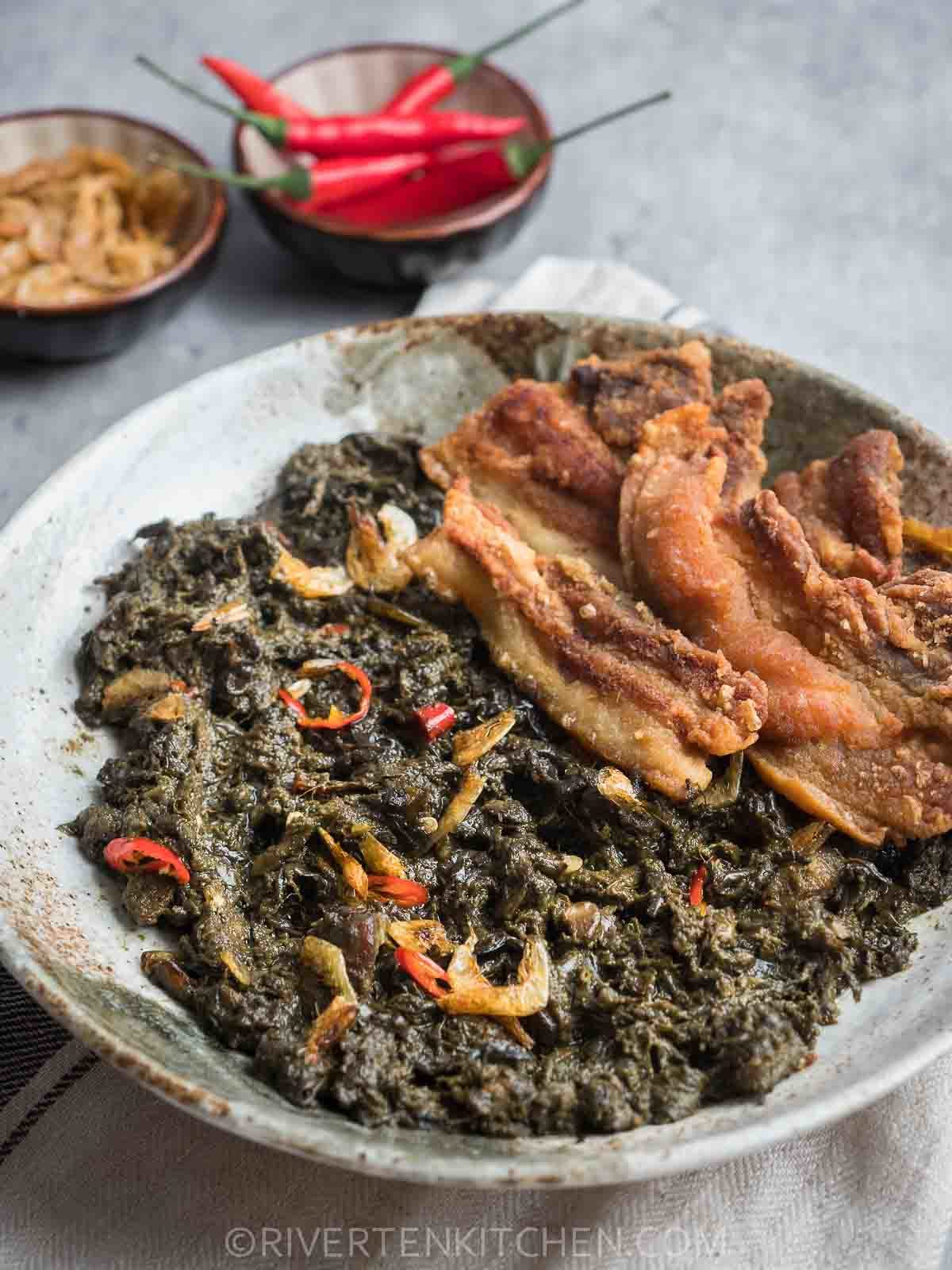
This is one of my favorite Bicolano dishes along with Bicol express. I was first introduced to it by a friend and oh my goodness, I loved everything about them–creamy, spicy and so flavorful!
So learning how to make these dishes “the right way” was one of the most rewarding things I’ve done this year. When the craving strikes, I can just easily make them at home.
About this recipe
- Cooked low and slow allowing all the flavors to develop and come together.
- Uses dried shrimp as one of the based flavors instead of jarred bagoong-alamang. It’s mild in flavor and less overpowering and adds a nice texture to the dish.
- You can make it thick (tuyo at nagmamantika) or creamy with plenty of coconut gravy.
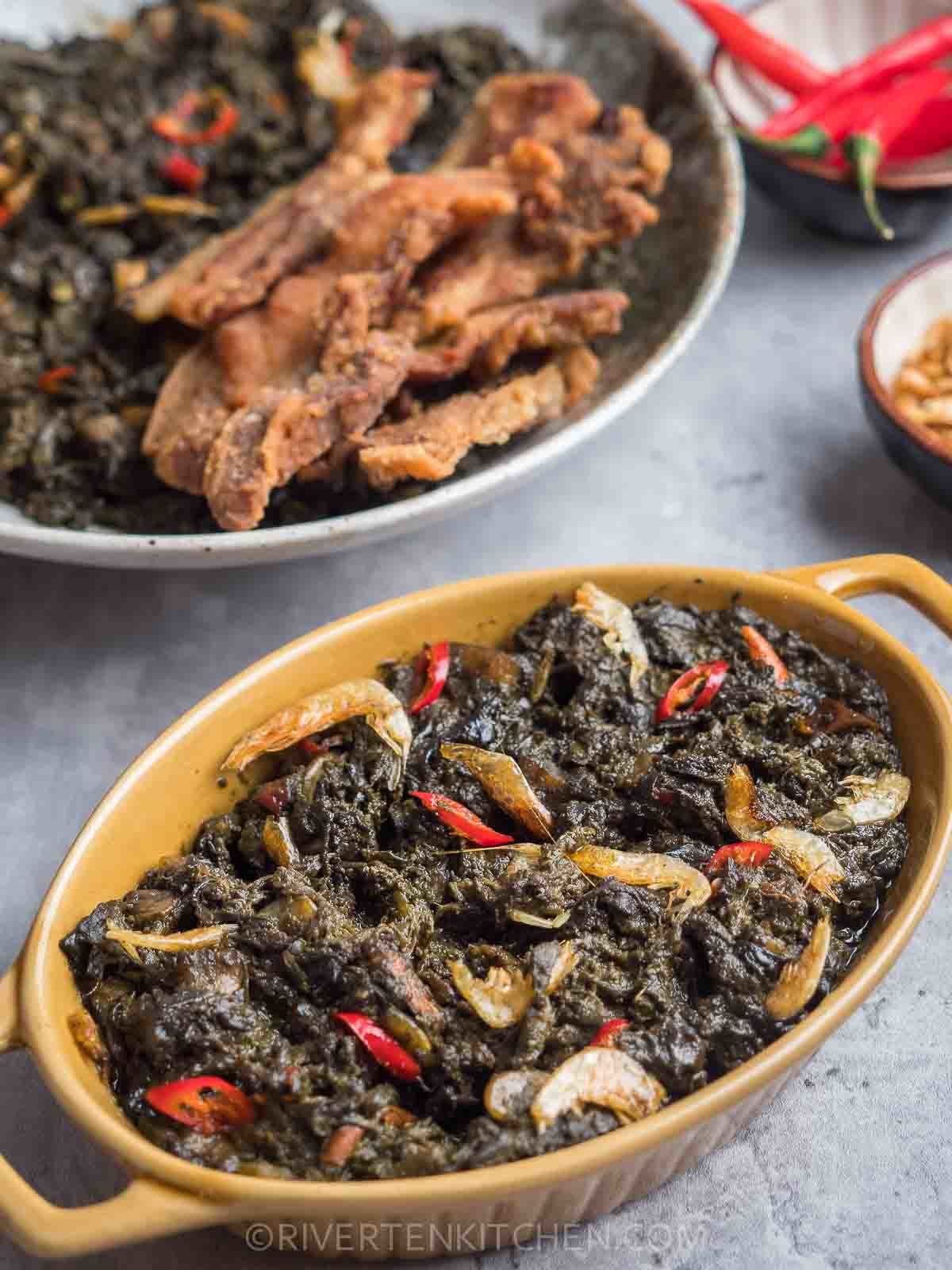
Ingredients
Here are the key ingredients of laing. You can find most of these in Filipino stores and Asian supermarkets.
- Taro leaves – usually sold in packs, pre-sliced and fully dried.
- Pork belly – the fat adds extra flavor to the dish. You can also substitute with leaner cuts if preferred.
- Dried Shrimp – find the best quality you can find. You can find many different kinds online. I used small-sized shrimps, with heads and skins for more flavor.
- Onions, Garlic, and ginger – grate the ginger for more flavor.
- Coconut milk – lots of it! it’s the secret to making the best laing. Find the best quality you can find. Avoid using those that contain thickeners like xanthan gum, guar gum, or carrageenan.
- Chilies – use siling labuyo, bird’s eye chilies for spice and green chilies to make it fragrant.
Cooking Tips
Here are my top tips on how to make laing at home:
- Parboil the leaves in hot water for a few minutes. This will help lessen the earthy smell that usually develops on packed dried taro leaves. Skip if you’re using freshly dried leaves.
- Brown the pork until fat is rendered. This will add more flavor to the dish.
- Simmer the leaves for around 10 minutes before stirring. This is technique supposedly prevents the leaves from becoming itchy.
- For a creamier laing with lots of sauce, add more coconut milk or cream towards the end of the cooking. Let it simmer until desired consistency is achieved.
What to serve with Laing
Laing goes so well with fried fish, pork, chicken, and Filipino barbecue. Serve over steaming rice and you’re day is complete. So good!
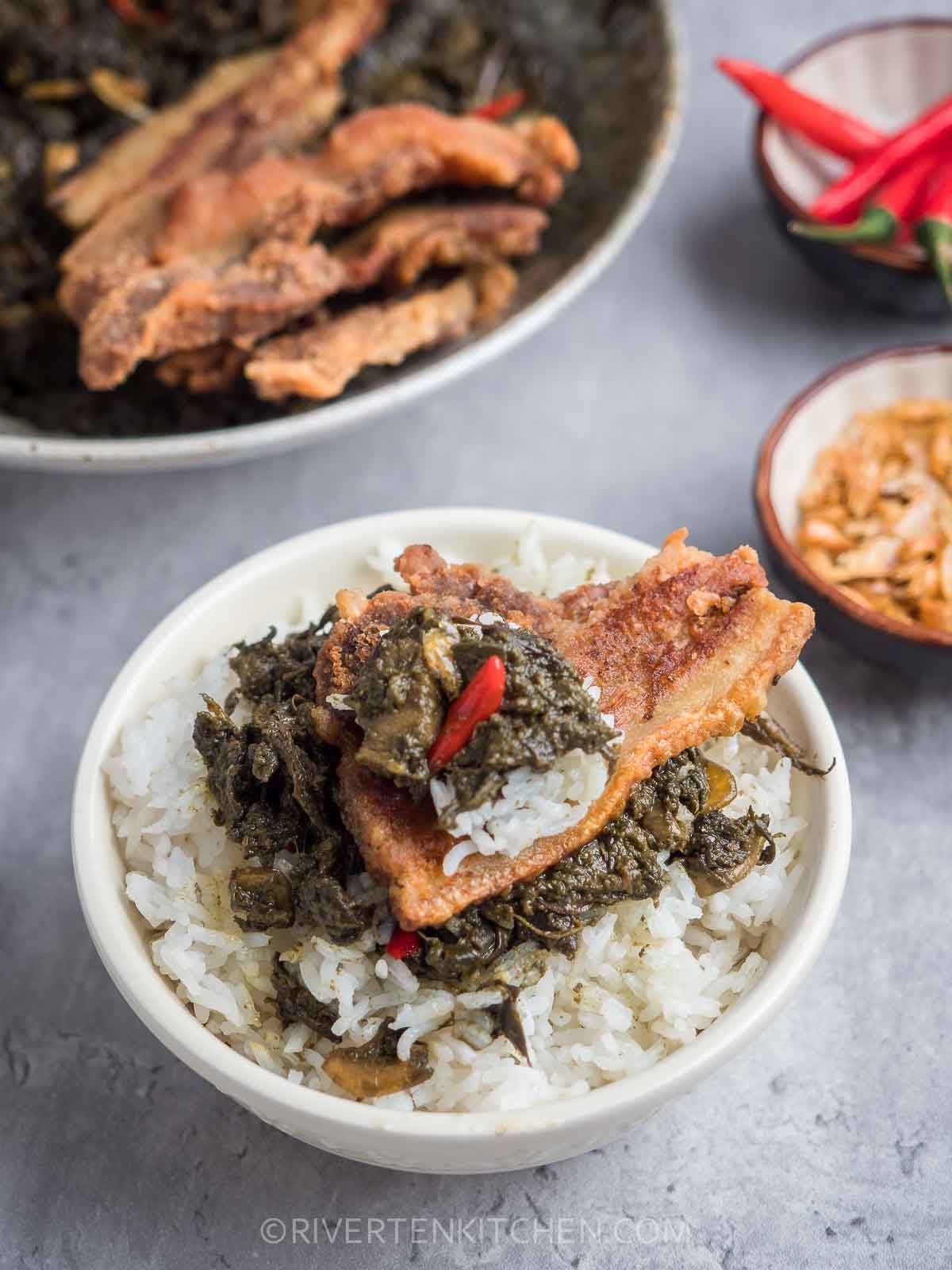
Shelf-life and Storage
Store laing in an airtight container. It can last in the fridge for up to 5 days and 1 month in the freezer. Thaw overnight in the fridge before reheating.
To reheat, microwave for 1 minute or simmer in a pan over medium heat. Add more coconut milk to re-hydrate if needed.
Frequently asked questions
Large spinach leaves are a good substitute for dried taro leaves. As it requires less cooking time, simmer the coconut milk until liquid is reduced before adding the leaves.
Dried fish like daing and danggit is commonly added to laing. Flaked into pieces and add midway of cooking. Fresh shrimps are also a good addition. Note that shelf-life will be shorter if using fresh shrimp.
Serve laing with these Filipino dishes
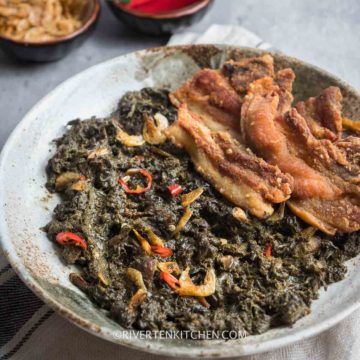
Laing with Pork
Ingredients
- 10.5 oz pork belly or shoulder (sliced into small pieces)
- 1 tbsp vegetable oil
- 3.5 oz dried taro leaves (see note 1)
- ½ cup dried shrimp (see note 2)
- 1 pc shrimp bouillon
- 5 cups coconut milk (divided, add more if preferred)
- ½ thumb ginger (grated)
- 2 cloves garlic (finely chopped)
- 1 onion (sliced)
- 2 to 5 pieces siling labuyo or Thai bird's eye chili (see note 3)
- 2 pieces green chili (sliced)
- salt (to taste)
Instructions
- Heat oil in a shallow pot over high heat. Add pork and season with salt. Fry until brown and fat has rendered. Push meat to the side of the pot. Add garlic, ginger and onion. Stir-fry until fragrant and translucent.
- Lower the heat to medium. Pour 4 cups coconut milk, crushed shrimp bouillon and dried shrimp. Bring to a simmer.
- Add the taro leaves then push down with a spoon to submerged. DON'T STIR. Cover with a lid and let it boil for 10 minutes.
- Gently stir. Add red and green chilies. Continue cooking for another 20 minutes uncovered over low heat until liquid is almost reduced. Stir every now and then to prevent leaves from sticking to the bottom of the pot.
- Add remaining 1 cup coconut milk. If you prefer a liquidy consistency add more. Stir then taste test. Season with salt as needed. Simmer for another 10 to 15 minutes. If you prefer a drier laing, cook until liquid is reduced.
- Serve with rice and enjoy!
Recipe Notes & Tips:
- Parboiling the taro leaves: Bring a pot of water to a boil. Have the strainer ready to drain the leaves. Add 1/3 of the dried taro leaves. Don’t stir. After 30 seconds add another third and then the final third. Push the leaves down with a spoon but do not stir. Parboil for 1 to 2 minutes. Immediately drain and discard the water.
- Dried Shrimp – I recommend using small size whole dried shrimps with head, skin, and tails.
- Red Chili – remove or reduce the seeds to lessen the spiciness.
- Variations – add flaked dried fish like daing, danggit, and fresh shrimp for more flavor. Lemongrass can also be added at the beginning of cooking to make it fragrant.
- Storage and Shelf-life: store in an airtight container. It can last in the fridge for up to 5 days and 1 month in the freezer. Thaw overnight in the fridge before reheating. Note that shelf-life with fresh shrimps is only up to 3 days and must be stored in the refrigerator.
- Re-heating: microwave for 1 minute or simmer in a pan over medium heat. Add more coconut milk to re-hydrate if needed.

